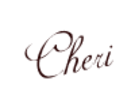Blogging Prompt Day 9
Take a family document (baptismal certificate, passenger list, naturalization petition, etc.) and write a brief narrative using the information.
 |
| Front of War Ration Book One Bertie Lee Roberts 5 May 1942 © Cheri Hudson Passey |
 |
| Back of War Ration Book One Bertie Lee Roberts 5 May 1942 © Cheri Hudson Passey |
The document describes Bertie Lee as being 5'6" with Black Hair and Black eyes, and 23 years old. Her father, William T. Roberts applied for the card. Bertie Lee's address in Charlotte, NC is also given.
According to the instructions on how to use the War Ration Card 1, the stamps were to be used to buy sugar. A person was to let the ration office know how much sugar was already owned and then the official would tear out stamps accordingly. The remaining stamps were to be used to buy more sugar when needed.
I do have pictures of Bertie Lee but reading the description was fun. I wish I had these cards for people that I don't have pictures of! I also was able to use the 1942 address to help me find the family in Charlotte on the 1940 Census. Because they were Mill workers, they would travel between the North and South Carolina
Cotton Mills depending on where the work was.
In 1943 War Ration Book Two was issued. This is one of the Ration Books for Bertie Lee's mother, my Great Grandmother, Beulah Mae Roberts.
 |
| Front of War Ration Book Two -Front Issued to Beulah Mae Roberts 1943 © Cheri Hudson Passey |
 |
| Back of War Ration Book Two -Front Issued to Beulah Mae Roberts 1943 © Cheri Hudson Passey |
There is no description of Beulah on this ration book but her address in Charlotte, NC is given.
At this point the old ration books were to be used to buy sugar and coffee. Book Two was to be used to buy canned or bottled fruits, vegetables, soups and juices, frozen fruits and vegetables, and dried fruits. Each person was allotted so many stamps for food. When the stamps ran out they would not be able to buy any more of these foods until the government issued more stamps. It was up to the government to decide when stamps would be issued.
On the back of the card is this reminder:
Rationing is a vital part of your country's war effort. This book is your Government's guarantee of your fair share of goods made scarce by war, to which the stamps herein will be assigned as the need arises.
Any attempt to violate the rules is an effort to deny someone his share and will create hardship and discontent.
Such action, like treason, helps the enemy.
Give your whole support to rationing and thereby conserve our vital goods. Be guided by the rule:
"If you don't need it, DON'T BUY IT."
 |
| Bertie Lee Roberts (1917-2001) 1943 Charlotte, NC © Cheri Hudson Passey |
 |
| Beulah Mae Price Roberts ( 1897-1980) Mid 1940's © Cheri Hudson Passey |
Visit the The Accidental Genealogist for more information about the Celebrating Women's History Blog Prompts.


All my relatives had ration books during the war, too -- both in Sumter and in Charleston, where my maternal and paternal relatives lived. We're so used to a consumer society today, that rationing is hard to imagine. Nobody kept a ration book in my family, so thank you for these images to help me imagine what it was like!
ReplyDelete